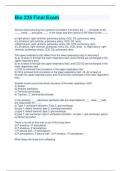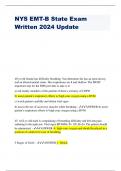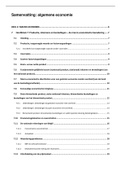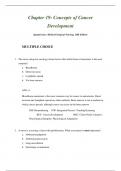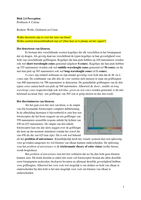Circadian rhythms and the biological clock
The concept of homoeostasis suggests that regulations in the organism are all directed at maintaining
physiological parameters stable. However, this is not exactly the case. In fact, several processes are aimed
at changing the functioning of the organism to enact general programs or to anticipate predictable
situations.
Several changes occur daily following a circadian temporization, to anticipate needs and avoid conflicts:
• Circadian fluctuations in demand/stresses must be anticipated and adapted to.
• Circulating levels of various endocrine factors oscillate over the 24h period, and so does
responsiveness of targets tissues to these signals/stimuli.
• Biological processes occur in an appropriate order, thereby preventing concurrent activation of
potentially incompatible mechanisms.
Daily oscillations respond to behavioral fluctuations but are orchestrated in part by an intrinsic
timekeeping mechanism known as the circadian clock.
Disruption of circadian clocks, through genetic and/or environmental means, appears to precipitate
numerous common disorders, including cardiometabolic diseases and cancer.
Most of the circadian changes involve and are regulated by hormones. The actions of a hormone on the
cells are governed by:
• The concentration of the hormone relative to its affinity for its specific receptor.
• The abundance and/or availability of the receptor.
• The activity status of post-receptor signaling components, including mechanisms of
desensitization/down-regulation of hormone signaling.
Time of day has been shown to exert modulatory effect on all these governing mechanisms. In particular,
the circadian regulation varies among people: people can be classified in two “chronotypes”, known as
“morning larks” and “night owls”.
Generally speaking, however, hormones follow a common path in changes:
1. During the early night a surge in melatonin helps sleeping and synchronizing the cycle.
2. Later during the night, several hormones peak:
a. GH, so that growth and anabolism can occur, while the energetic needs of the organism
are reduced.
b. Vasopressin, and the RAAS later in the night, to reduce urine output.
c. Leptin, to reduce hunger.
d. TSH to sustain thyroid activity – followed sometime later by T3 – to contribute to GH
action and to avoid excessive hypothermia from inertia.
3. As the morning approaches, pituitary hormones ACTH, FSH and LH are released, followed
by cortisol and testosterone (erection before you wake up) to face the stress of the day.
4. A pretty important event is the rise in insulin – independent of food intake and glycaemia –
that occurs in the late afternoon, following a peak in adiponectin (an insulin sensitizer): the
function of this insulin elevation is to let the organism store glucose and free fatty acids – in the
form of glycogen in skeletal muscles and in the liver and as lipids in the adipose tissue – given
that the day is supposed to be over and no more exercise is expected.
42 Body At Work II
, Enrico Tiepolo
The center for the general control of the circadian cycle is the suprachiasmatic nucleus (SCN) of
the hypothalamus, which receives information on the external light directly from the eyes (light
sensitive ganglionic cells from the retina) and control signals from other hypothalamic nuclei as regards
feeding and sleep/wake.
• The SCN can control melatonin release from the epiphysis/pineal gland and the
hypothalamus-pituitary axis through the involvement of the preoptic, supraoptic,
paraventricular and arcuate nuclei.
The suprachiasmatic nucleus (SCN)
The SCN receives projections from the melanopsin containing ganglion cells in the retina; these inputs
mostly reach the core of the SCN, where the two main neuropeptides are vasoactive intestinal
peptide (VIP), that rises during the dark period, and gastrin-releasing peptide (GRP) that rises
during the light period.
The main peptide in the shell of the SCN is arginine vasopressin (AVP); AVP neurons project to the
paraventricular nucleus (PVN), coordinating circadian feeding rhythms with the circadian rhythm; they
also project to thirst-controlling neurons in the organum vasculosum lamina terminalis
The SCN projects to several other nuclei in the hypothalamus (ex. projections to the preoptic nucleus
control sleep and wakefulness); in the thalamus, projections terminate in the anterior part of the
paraventricular nucleus (main function is to integrate threat and arousal-related signals --> wakefulness).
Melatonin: The major polysynaptic efferents of SCN neurons project to the pineal gland (the path
descends to the intermediolateral column of the thoracic cord and exits through the superior cervical
ganglion).
During the night, norepinephrine is released from the postsynaptic fibers of the superior cervical
ganglion and stimulates postsynaptic β1 and α1 adrenergic receptors on pinealocytes, triggering
the production of melatonin. Melatonin supplementation has been used clinically for the treatment
of winter depression, numerous sleep disorders, and as an adjuvant therapy for epilepsy.
Cortisol levels exhibit a circadian rhythm in humans, peaking during the morning (7-8 AM). It prepares
the body for stresses associated with being awake and waking; cortisol release mostly mirrors circadian
variations in sensitivity of the adrenal cortex to, rather than to the level of, ACTH.
GH (HGH) exhibits both circadian and ultradian (last fewer than 24 hours) variation, as well as sexual
dimorphism:
- In females we observe frequent non-discrete (not distinct) peaks of uniform amplitude
throughout the day with and increased mean secretion at night (during sleep).
- In males the peaks are fewer and more discrete, the peak amplitude increasing at night.
- In children, peaks are greater.
43 Body At Work II


